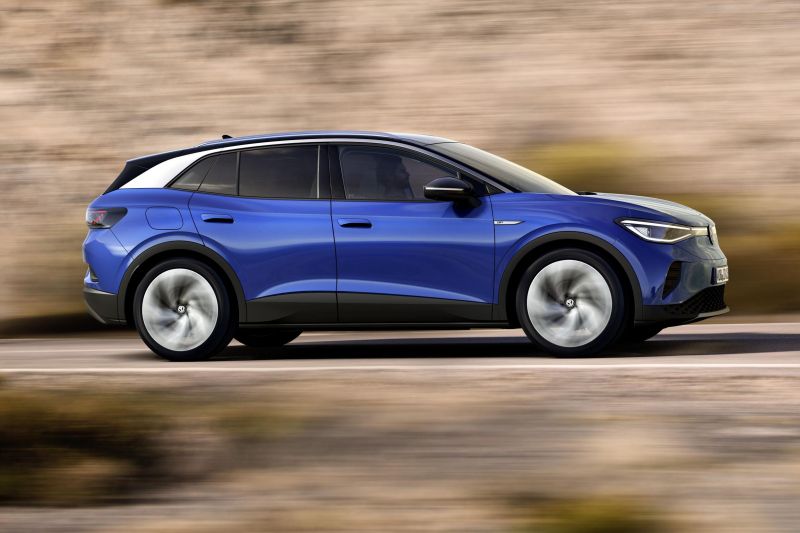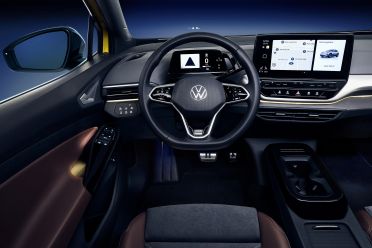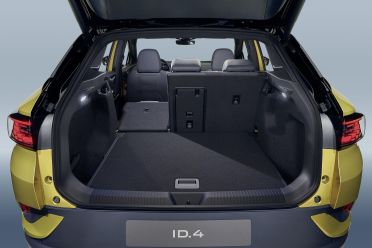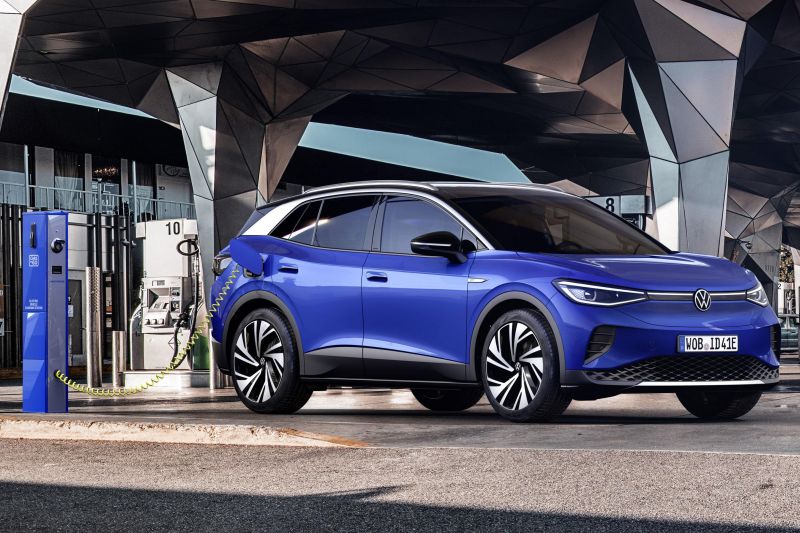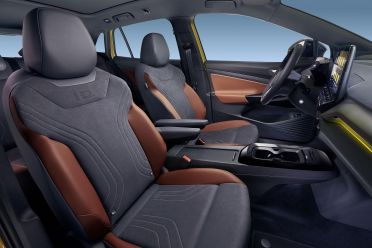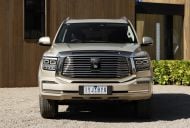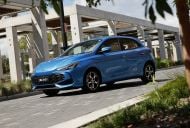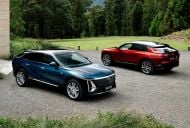Volkswagen’s bid to take electric vehicles mainstream has stepped up another gear with the launch of the ID.4 crossover, which is expected to be the brand’s first EV model offered Down Under.
Likely going on sale in Australia some time in 2022 or 2023, the ID.4 makes use of the Volkswagen Group’s new MEB dedicated electric car platform.
In Europe, the ID.4 will be initially available with a single drivetrain featuring a rear-mounted 150kW electric motor hooked up to a 77kWh battery pack.
This version of the ID.4 has a 0-100km/h time of 8.5 seconds, with a driving range of 520km using the WLTP standard and 400km under the US EPA’s testing criteria.
Because of the rear-wheel drive layout and its 210mm of ground clearance, the ID.4 is said to be capable of handling “gentle off-road terrain”.
Later on the ID.4 will be available in rear-wheel drive with either a 109kW and 125kW motor paired to a 52kWh battery, and a 129kW motor with a 77kWh battery.
An all-wheel drive performance version will have a dual-motor setup making a total of 225kW and paired with the larger 77kWh battery.
Measuring 4584mm long, 1852mm wide, 1612mm tall, and riding on a 2766mm wheelbase, the ID.4 sits between the Tiguan and long wheelbase Tiguan Allspace in terms of length and wheelbase.
The electric crossover is around the same width, but its roof is about 60mm closer to the ground. Because it rides on a dedicated EV platform, Volkswagen claims it has the same interior room as conventionally-powered SUVs from the class size above.
Boot space is rated at 543L with the rear seats in place and 1575L when they’re folded down. The ID.4’s curvaceous lines, and flat underbelly, mean it has an impressive 0.28 coefficient of drag.
Like the ID.3 hatch it’s closely related to, the ID.4 has a minimalist cabin with a small selection of physical and capacitive buttons on the dashboard and steering wheel.
Base models have a 10.0-inch touchscreen, while higher-spec variants have a 12.0-inch unit. Ahead of the driver there’s a small 5.3-inch digital cluster.
Features available include 19- to 21-inch alloy wheels, LED matrix headlights, 3D LED tail-lights, a panoramic glass roof, voice control, adaptive damping, wireless smartphone charging, 4G LTE Wi-Fi hotspot, heated windscreen, and faux leather upholstery.
Safety features extend to autonomous emergency braking with pedestrian detection, adaptive cruise control, lane keeping assist, travel assist, and blind spot monitoring.
Volkswagen says it has equipped the ID.4 with front disc brakes and rear drum brakes as the car will mainly use regenerative braking, rather than friction braking.
Over-the-air software updates will be available on the ID.4 and all MEB-based vehicles.
Production of the ID.4 begins next year in Zwickau, Germany, and at two sites in China. In 2022 an extra European manufacturing location will added to the mix and US production will begin.
Both on the Continent and in the States, the ID.4 will be priced below the Tesla Model Y, although it’s not exactly an apples to apples comparison.
In the US, pricing for locally made models will start from US$35,000 (A$48,200) and US$43,695 (A$60,100) for the AWD version.
Both models undercut the all-wheel drive US$49,990 (A$68,800) Model Y Long Range, but the Tesla does have an official 509km driving range and a 0-60mph time of 4.8 seconds.
It should be noted the ID.4 qualifies for the US$7500 ($10,300) federal tax credit, while the Model Y does not.
In Germany the limited-run ID.4 First Edition begins at €49,950 (A$80,900), whereas the Model Y Long Range is priced from €58,620 (A$95,000).





